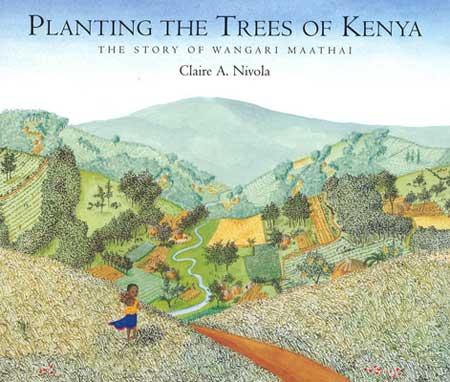 Planting The Trees Of Kenya by Claire A. Nivola
Planting The Trees Of Kenya by Claire A. Nivola
The Story of Wangari Maathai: This beautifully illustrated story does not attempt to tackle the wider global problem of the loss of rain forests and the destruction of people's livelihood by logging companies out for profit and the supplanting of food crops by commercial ones. The whole question of the harm done by agri-business must be the subject of quite a different book.
Here the question is asked: Who denuded the forests and fertile fields of the Kenya highlands to leave deserted areas or fields of commercial crops? Wangari, the real life heroine of this story, grew up in what she regarded as an earthly paradise. But when she returned to her native village after studying biology in an American university, she found it transformed and put the blame squarely on the shoulders of the village women.
Her heroic task, which earned her the Nobel Peace Prize and has become legendary, was to organise the women, later joined by the men(!) and, in difficult circumstances, including severe water shortage, to found the Green Belt Movement. Planting trees was its main purpose and also to bring back a sustainable agriculture in order to feed and clothe the people who had become impoverished, hungry and ragged.
They went into schools, prisons, army barracks and the message was always the same: here are seeds, plant them; till and water the soil and plant the old crops that fed you. To the soldiers she pointed out that real defence required "a gun in one hand and a seedling in the other!"
So, in thirty years, thirty million trees have been planted in Kenya, "tree by tree, person by person."
